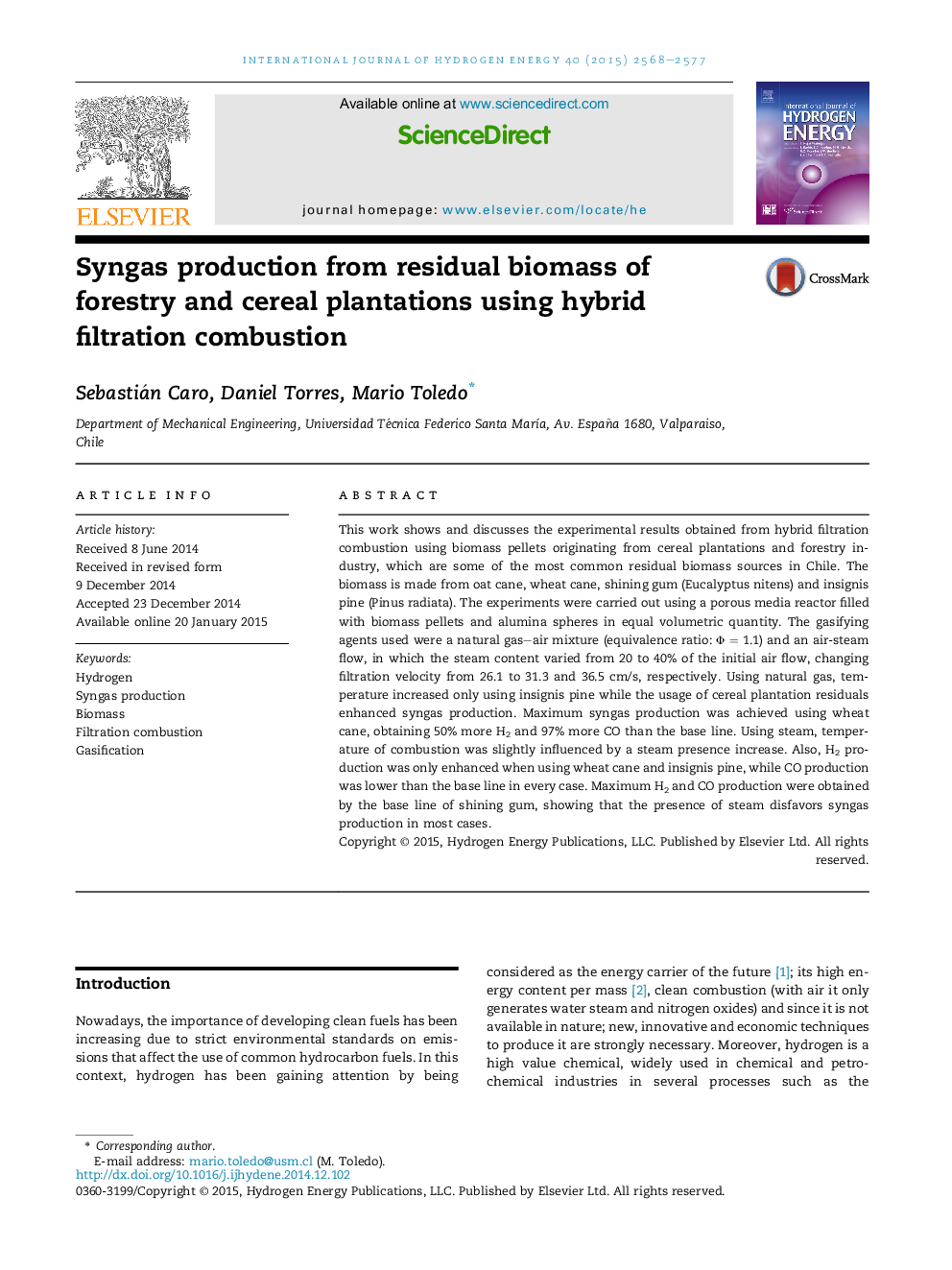| Article ID | Journal | Published Year | Pages | File Type |
|---|---|---|---|---|
| 1270022 | International Journal of Hydrogen Energy | 2015 | 10 Pages |
•Hybrid filtration combustion using biomass pellets.•Biomass is oat cane, wheat cane, shining gum and insignis pine.•The gasifying agents are natural gas–air mixture and air–steam flow.•Temperature and syngas production of the combustion waves.•Maximum H2 and CO production.
This work shows and discusses the experimental results obtained from hybrid filtration combustion using biomass pellets originating from cereal plantations and forestry industry, which are some of the most common residual biomass sources in Chile. The biomass is made from oat cane, wheat cane, shining gum (Eucalyptus nitens) and insignis pine (Pinus radiata). The experiments were carried out using a porous media reactor filled with biomass pellets and alumina spheres in equal volumetric quantity. The gasifying agents used were a natural gas–air mixture (equivalence ratio: Φ = 1.1) and an air-steam flow, in which the steam content varied from 20 to 40% of the initial air flow, changing filtration velocity from 26.1 to 31.3 and 36.5 cm/s, respectively. Using natural gas, temperature increased only using insignis pine while the usage of cereal plantation residuals enhanced syngas production. Maximum syngas production was achieved using wheat cane, obtaining 50% more H2 and 97% more CO than the base line. Using steam, temperature of combustion was slightly influenced by a steam presence increase. Also, H2 production was only enhanced when using wheat cane and insignis pine, while CO production was lower than the base line in every case. Maximum H2 and CO production were obtained by the base line of shining gum, showing that the presence of steam disfavors syngas production in most cases.
